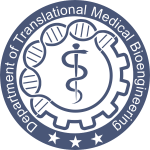Predictions of COVID-19 Pandemic Dynamics in Ukraine and Qatar Based on Generalized SIR Model
DOI:
https://doi.org/10.20535/ibb.2021.5.1.228605Keywords:
COVID-19 pandemic, epidemic dynamics in Ukraine, epidemic dynamics in Qatar, mathematical modeling of infection diseases, statistical methods, SIR model, parameter identificationAbstract
Background. To simulate how the number of COVID-19 cases increases versus time, various data sets and different mathematical models can be used. Since there are some differences in statistical data, the results of simulations can be different. Complex mathematical models contain many unknown parameters, the values of which must be determined using a limited number of observations of the disease over time. Even long-term monitoring of the epidemic may not provide reliable estimates of the model parameters due to the constant change of testing conditions, isolation of infected, quarantine conditions, pathogen mutations, vaccinations, etc. Therefore, simpler approaches are necessary. In particular, previous simulations of the COVID-19 epidemic dynamics in Ukraine were based on smoothing of the dependence of the number of cases on time and the generalized SIR (susceptible–infected–removed) model. These approaches allowed detecting the pandemic waves and calculating adequate predictions of their duration and final sizes. In particular, eight waves of the COVID-19 pandemic in Ukraine were investigated.
Objective. We aimed to detect the changes in the pandemic dynamics and present the results of SIR simulations based on Ukrainian national statistics and data reported by Johns Hopkins University (JHU) for Ukraine and Qatar.
Methods. In this study we use the smoothing method for the dependences of the number of cases on time, the generalized SIR model for the dynamics of any epidemic wave, the exact solution of the linear differential equations, and statistical approach for the model parameter identification developed before.
Results. The optimal values of the SIR model parameters were calculated and some predictions about final sizes and durations of the epidemics are presented. Corresponding SIR curves are shown and compared with the real numbers of cases.
Conclusions. Unfortunately, the forecasts are not very optimistic: in Ukraine, new cases will not stop appearing until June–July 2021; in Qatar, new cases are likely to appear throughout 2021. The expected long duration of the pandemic forces us to be careful and in solidarity. Probably the presented results could be useful in order to estimate the efficiency of vaccinations.
References
Nesteruk I. Simulations and Predictions of COVID-19 Pandemic With the Use of SIR Model. Innovative Biosystems and Bioengineering. 2020;4(2):110-21. DOI: 10.20535/ibb.2020.4.2.204274
Nesteruk I. Waves of COVID-19 pandemic. Detection and SIR simulations. medRxiv, 2020. Preprint. DOI: 10.1101/2020.08.03.20167098
Nesteruk I. COVID-19 pandemic dynamics in Ukraine after September 1, 2020. medRxiv, 2020. Preprint. DOI: 10.1101/2020.12.21.20248627
Nesteruk I. COVID-19 Pandemic Dynamics: Mathematical Simulations. Singapore: Springer Singapore; 2021. DOI: 10.1007/978-981-33-6416-5
Fahmy AE, El-desouky MM, Mohamed ASA. Epidemic Analysis of COVID-19 in Egypt, Qatar and Saudi Arabia using the Generalized SEIR Model. medRxiv, 2020. Preprint. DOI: 10.1101/2020.08.19.20178129
Ghanam R, Boone EL, Abdel-Salam A-SG. SEIRD Model for Qatar Covid-19 Outbreak: A Case Study. arXiv, 2020. Preprint. DOI: 10.48550/arXiv.2005.12777
Coronavirus in Ukraine: Statistics, map of infections, graphs. Index.minfin.com.ua. Available from: https://index.minfin.com.ua/ua/reference/coronavirus/ukraine/
Cabinet of Ministers of Ukraine – Home. Kmu.gov.ua. Available from: https://www.kmu.gov.ua/
Coronavirus Disease (COVID-19): Situation Reports. Who.int. Available from: https://www.who.int/emergencies/diseases/novel-coronavirus-2019/situation-reports/
COVID-19 Data Repository by the Center for Systems Science and Engineering (CSSE) at Johns Hopkins University. Github.com. Available from: https://github.com/CSSEGISandData/COVID-19
Kermack WO, McKendrick AG. A contribution to the mathematical theory of epidemics. Proceedings of the Royal Society of London. Series A, Containing Papers of a Mathematical and Physical Character. 1927;115(772):700-21. DOI: 10.1098/rspa.1927.0118
Murray JD (eds). Mathematical Biology: I. An Introduction, vol. 17. New York, NY: Springer New York; 2002. DOI: 10.1007/b98868
Draper NR, Smith H. Applied Regression Analysis. Wiley; 1998. DOI: 10.1002/9781118625590
Statistical tables. Onlinepubs.trb.org. Available from: https://onlinepubs.trb.org/onlinepubs/nchrp/cd-22/manual/v2appendixc.pdf
An experiment with mass testing for COVID-19 was conducted in Khmelnytskyi. Podillyanews.com. Available from: https://podillyanews.com/2020/12/17/u-shkolah-hmelnytskogo-provely-eksperyment-z-testuvannyam-na-covid-19
Downloads
Published
How to Cite
Issue
Section
License
Copyright (c) 2021 The autror(s)

This work is licensed under a Creative Commons Attribution 4.0 International License.
The ownership of copyright remains with the Authors.
Authors may use their own material in other publications provided that the Journal is acknowledged as the original place of publication and National Technical University of Ukraine “Igor Sikorsky Kyiv Polytechnic Institute” as the Publisher.
Authors are reminded that it is their responsibility to comply with copyright laws. It is essential to ensure that no part of the text or illustrations have appeared or are due to appear in other publications, without prior permission from the copyright holder.
IBB articles are published under Creative Commons licence:- Authors retain copyright and grant the journal right of first publication with the work simultaneously licensed under CC BY 4.0 that allows others to share the work with an acknowledgement of the work's authorship and initial publication in this journal.
- Authors are able to enter into separate, additional contractual arrangements for the non-exclusive distribution of the journal's published version of the work (e.g., post it to an institutional repository or publish it in a book), with an acknowledgement of its initial publication in this journal.
- Authors are permitted and encouraged to post their work online (e.g., in institutional repositories or on their website) prior to and during the submission process, as it can lead to productive exchanges, as well as earlier and greater citation of published work.









